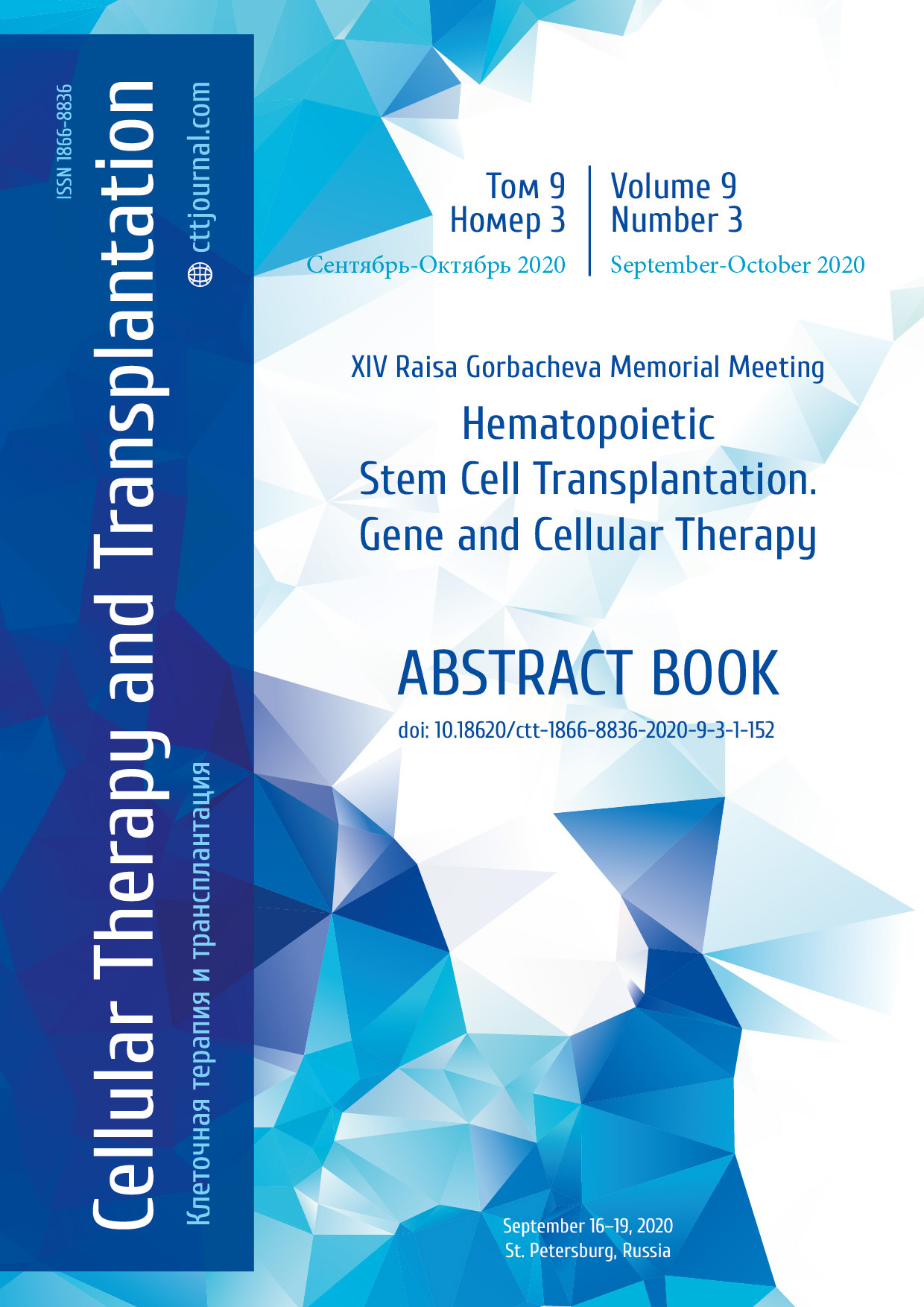PO-06. TCRαβ+/CD19+-depletion in hematopoietic stem cells transplantation from matched unrelated and haploidentical donors in children with high-risk acute myeloblastic leukemia in first complete remission
Larisa N. Shelikhova, Mariа A. Ilyushina, Zhanna B. Shekhovtsova, Dmitriy N. Balashov, Yuliya V. Skvortsova, Yakov O. Muzalevsky, Irina P. Shipitsina, Daria A. Shasheleva, Rimma D. Khismatullina, Elena E. Kurnikova, Sergey L. Blagov, Svetlana N. Kozlovskaya, Anna M. Livshits, Irina I. Kalinina, Lily A. Khachatryan, Anna A. Bogoyavlenskaya, Dmitriy E. Pershin, Alexander M. Popov, Yuliya V. Olshanskaya, Dmitriy V. Litvinov, Galina A. Novichkova, Alexei A. Maschan, Michael A. Maschan
Dmitry Rogachev Federal Research Centre of Pediatric Hematology, Oncology and Immunology, Moscow, Russia
Contact: Dr. Larisa N. Shelikhova, e-mail: lnik1976@mail.ru
Summary
Introduction
Allogeneic hematopoietic stem cell transplantation (allo-HSCT) performed in 1st complete remission (CR1) provides best chance of leukemia-free survival among the children with acute myeloid leukemia (AML) with high-risk genetic features and/or poor response to therapy. Choice of donor and overall strategy of preparative regimen and graft-versus-host disease (GvHD) prevention remain an area of active research. Depletion of αβ T cells was developed to improve the outcomes of hematopoietic stem cell transplantation (HSCT) by decreasing the incidence of GVHD while maintaining the anti-leukemia effects and infection control. We report here the results of a retrospective outcome research in a cohort of children with high-risk AML, who received αβ T cell-depleted HSCT in CR1.
Patients and methods
A total of 74 pediatric patients (pts) with AML (29 females, 45 males, median age 7.8 years, a range of 0.4 to 23 y.o.) underwent allogeneic HSCT between May 2012 and August 2019. Forty eight pts received haplоidentical (haplo) grafts, 26 pts have been transplanted from matched unrelated donors (MUD). All the patients were in CR1, showed high-risk genetic markers (n=54), poor response to induction therapy (n=16) and M6/M7 morphology (n=21), and transplanted according to institutional AML protocol. All the pts received treosulfan/fludarabine-based preparative regimen; either melphalan (n=43) or thiotepa (n=31) were added as a second agent. Three regimens of GvHD prophylaxis were used. Regimen 1 (n=20): hATG 50 mg/kg and post-HSCT tacro/mtx; regimen 2 (n=34): thymoglobulin 5 mg/kg, rituximab 200 mg/m2 and bortezomib on day +2, +5; regimen 3 (n=19): tocilizumab at 8 mg/kg on day -1 and post-transplant bortezomib and abatacept at 10 mg/kg on day +2, +7, +14, +28. TCRαβ+/CD19+ depletion of HSCT with CliniMACS technology was implemented in all cases. Median follow-up is 3.8 y (3 mo to 7.5 y).
Results
Primary engraftment was achieved in 71 (95%) of 74 pts (1 pt died before engraftment, 2 received 2nd HSCT), the median time to neutrophil and platelet recovery was 13 and 14 days, respectively. All the engrafted pts achieved complete donor chimerism by day +30. Transplant-related mortality was 8.5% (95% CI: 4-18). The cumulative incidence (CI) of relapse at 3.8 years was 17% (95%CI:10-28) for the whole cohort. CI for acute GvHD grade ≥ II was 18.9% (95% CI: 12-30); grade III–IV, 5.4% (95%CI: 2-14), and chronic GvHD, 12% (95% CI: 7-23). No correlation between donor type and GvHD was noted. The pEFS rate was 75% (95%CI: 64-85) for the whole cohort, in the haplo group it was 82% (95%CI: 72-94), as compared to 62% (95%CI:43-80) in the MUD group, p=0.08. The pOS was 81% (95%CI: 71-94) for the whole cohort, in Haplo group it was 91% (95%CI: 83-99), as compared to 65% (95%CI:47-84) in the MUD group, p=0.011.
Conclusions
This analysis indicates that αβ T-depleted HSCT from haploidentical donors provides a high chance of long-term survival in a cohort of children with high-risk AML in CR1, being associated with a low burden of GVHD and non-relapse mortality. We suggest that, due to easy logistics of donor choice for children with high-risk AML in CR1, it should be reconsidered in favor of haploidentical donors.
Keywords
Acute myeloid leukemia, hematopoietic stem cell transplantation,TCRαβ+/CD19+-depletion.


